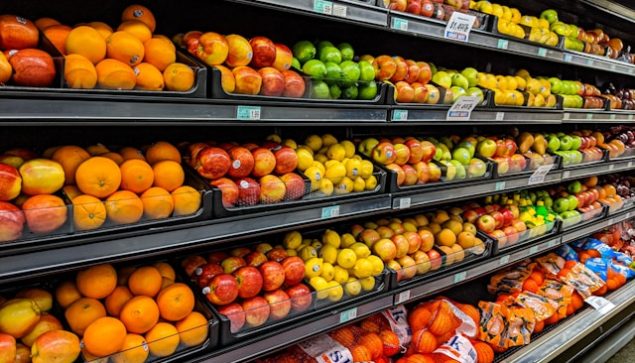An all-party committee report unanimously recommends action on profiteering, concentration and food insecurity, but risks undermining Canada’s Healthy Eating Strategy.
By Marissa Alexander and Wade Thorhaug
(Originally published for the Hill Times, on July 1, 2024)
As Canadians continue to struggle to pay their grocery bills, it is heartening to see cross-party consensus on the need to tackle excessive profits and curb monopoly power. The recommendations from the recent House Agriculture and Agri-Food Committee report on food price volatility follow months of hearings.
The report recognizes that oligopolies and monopolies are extracting unreasonable profits at the expense of farmers and consumers, and asks for effective government action. Economist Jim Stanford gave expert testimony to the Committee, one of the few voices outside of food corporations to testify. He emphasized the record profiteering by corporations that has fuelled food price inflation since the pandemic. In a recent Food Secure Canada (FSC) webinar on greedflation, he underlined that it is not farmers or workers who are getting rich from high prices, it’s big business and their shareholders.
While welcome, the report’s recommendation on tackling profiteering lacks specifics, and the devil will be in the details. The recommendation to curb monopoly power offers important paths to strengthen competition law, such as preventing or dissolving mergers and shifting the burden of proof onto corporations. This is a start. The National Famers Union has laid out further, robust ways to tackle rampant concentration not just of the grocery sector, but also of farm inputs like seeds, fertilizer, and farm machinery, as well as food manufacturing. All are dominated by a handful of companies.
The Federal government has been emphasizing a Grocery Code of Conduct to advance transparency and fairness between food manufacturers and retailers, but it does not include provisions for fairness with consumers. Further, the current version of the “code” is voluntary and would do little to curb excess corporate power. The big five retailers – Loblaw, Metro, Sobeys, Walmart, and Costco – enjoy an 80 per cent market share. The Agriculture Committee recommends that the federal government work with provinces and territories towards legislation that would make fairness provisions mandatory. However, Stanford described the code as “Godzilla versus King Kong”, where a fight between manufacturers and retailers will only deliver marginal benefits for consumers.
It is encouraging that the committee’s report recommends removing barriers to Canada’s food retail market. But discussions prioritize attracting foreign and digital multinationals, not strengthening local businesses. FSC is instead advocating for transformative and (w)holistic approaches to the way Canadians shop and eat, encompassing public markets, co-operatives and solidarity shops, agroecology, as well as Black and Indigenous foodways—all of which already exist yet face systemic barriers such as lack of funding and access to corporate-dominated supply chains.
On food insecurity, the committee looked at affordability in remote areas. Like so many before them, the committee recommends that the government’s Nutrition North retail-managed subsidy program be reviewed. A recent study shows that while more than two-thirds of households in the North experience food insecurity, only 67 cents of each dollar of subsidy is used to lower prices. Retailers are not passing the full benefit to shoppers as they are required to do. Most remote communities have only one or two grocery stores, effectively creating a natural monopoly. Half of all these public dollars are going to the North West Company, headquartered in Winnipeg, which dominates northern retail. While further review is welcome, we already know that locally hunted and harvested food programs need to be better supported, as do Indigenous-run co-ops.
The committee’s other recommendation on food insecurity also lacks detail, recommending that the Food Policy for Canada include a focus on food affordability. FSC and others go much further, advocating for a government-wide target to cut food insecurity by 50% and eliminating severe food insecurity by 2030.
Finally, Agriculture Committee’s recommendation on front-of-package labelling, to “balance” public health with company concerns, ostensibly because of price implications – is the latest corporate effort to push back against Canada’s Healthy Eating Strategy. Labeling regulation was finally introduced in 2022, and will be mandatory by 2026. We can’t let it falter. Prominent labeling of processed food high in salt, sugars and saturated fat enables healthier eating, with enormous potential benefits for individuals and the public purse – for example, by lowering health costs for diet-related diseases. Eighty-one per cent of Canadians support this labeling.
The committee has called on the government to respond to their recommendations. We will be watching closely.
Marissa Alexander and Wade Thorhaug are co-Executive Directors of Food Secure Canada. Alexander has spent most of her career exploring the intersections of food security, equity, and social justice. Thorhaug has extensive experience advocating for affordability in northern Canadian communities, local Indigenous food systems, and a rehaul of Nutrition North Canada.
